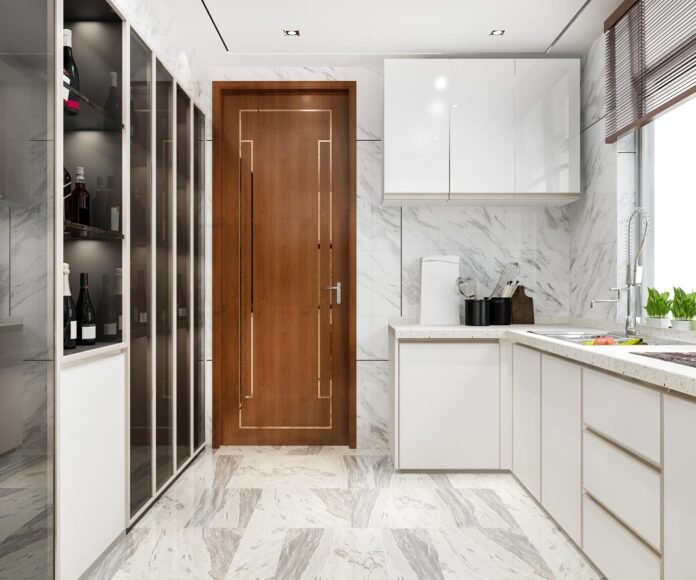Introduction
When it comes to designing a functional and stylish kitchen, the kitchen cupboard doors are often the most visible and defining features. These doors not only protect your kitchenware but also set the tone for the entire space, from classic and cozy to sleek and modern. Whether you’re remodeling your kitchen or building from scratch, choosing the right kitchen cupboard doors is a decision that deserves attention. The materials, finishes, styles, and hardware all play a role in both aesthetics and functionality. In this article, we’ll explore the different types of cupboard doors, popular materials, design options, and practical considerations to help you make the right choice for your kitchen.
1. Types of Kitchen Cupboard Doors
There are several styles of kitchen cupboard doors, each offering a different visual impact and level of craftsmanship. The most common types include Shaker, Slab, Raised Panel, and Glass-Front doors. Shaker doors are known for their simple, clean lines and recessed panels, making them a timeless choice that fits into both traditional and contemporary kitchens. Slab doors, on the other hand, are flat and sleek, often used in modern or minimalist kitchens for their smooth surface and uninterrupted look. Raised panel doors add a touch of elegance with their decorative detailing and are often found in classic or traditional settings. Glass-front doors are perfect for showcasing dishware or adding a sense of openness to the space. Each type offers its own aesthetic value, so the best choice depends on your overall kitchen design and personal style preferences.
2. Choosing the Right Material
The material of your cupboard doors plays a major role in their durability, appearance, and cost. Solid wood is a popular option for its natural beauty and strength, though it can be more expensive and prone to warping with changes in humidity. MDF (Medium-Density Fiberboard) is another commonly used material, favored for its smooth surface, affordability, and ability to hold paint well—ideal for painted finishes and custom colors. Plywood offers a balance between durability and cost, while laminate and thermofoil doors provide a budget-friendly option with a wide variety of finishes and colors. The choice of material should align with your budget, kitchen usage, and desired aesthetic. For busy households or rental properties, low-maintenance materials like laminate may be preferable, while those seeking a high-end, long-lasting finish might lean toward solid wood or veneered MDF.
3. Color and Finish Options
Color can completely transform the feel of your kitchen, and cupboard doors are one of the largest canvases in the room. Neutral tones like white, gray, and beige remain popular for their timeless appeal and versatility. However, darker hues like navy, forest green, and even black are gaining popularity for their bold, sophisticated look. Painted finishes offer a wide range of customization and are ideal for those looking to match specific color schemes. Wood stains, on the other hand, highlight the grain and natural character of the material, adding warmth and texture. Glossy finishes can reflect light and make smaller kitchens feel more spacious, while matte finishes create a soft, modern touch. When choosing color and finish, consider your kitchen’s natural lighting, the surrounding cabinetry and countertops, and your long-term maintenance preferences.
4. Hardware and Accessories
While cupboard doors are the stars of the show, the hardware—like handles, knobs, and hinges—acts as the supporting cast that completes the look. The right hardware can enhance the design, whether you’re going for a vintage farmhouse style or a sleek modern look. Brushed nickel, matte black, and brass are popular choices that pair well with a variety of door finishes. Soft-close hinges and drawer slides are more than just luxury features—they improve the longevity of your cabinetry and reduce noise. In addition to aesthetics, also consider ergonomics and ease of use, especially in high-traffic kitchens. Whether you prefer minimalist finger pulls or statement-making oversized handles, your hardware choice can make a big difference in both appearance and day-to-day functionality.
5. Maintenance and Durability
Maintaining kitchen cupboard doors is crucial for keeping them looking new over time. Different materials and finishes require different levels of care. For example, painted MDF doors should be cleaned gently with non-abrasive cloths to avoid chipping or peeling. Solid wood doors might need occasional oiling or refinishing, especially if exposed to high humidity or direct sunlight. Laminate and thermofoil doors are easy to clean with just soap and water, making them ideal for busy households. It’s also important to regularly check for loose hinges or misaligned doors, as these small issues can lead to bigger structural problems if left unaddressed. Proper maintenance not only preserves the visual appeal of your cupboards but also extends their functional life.


